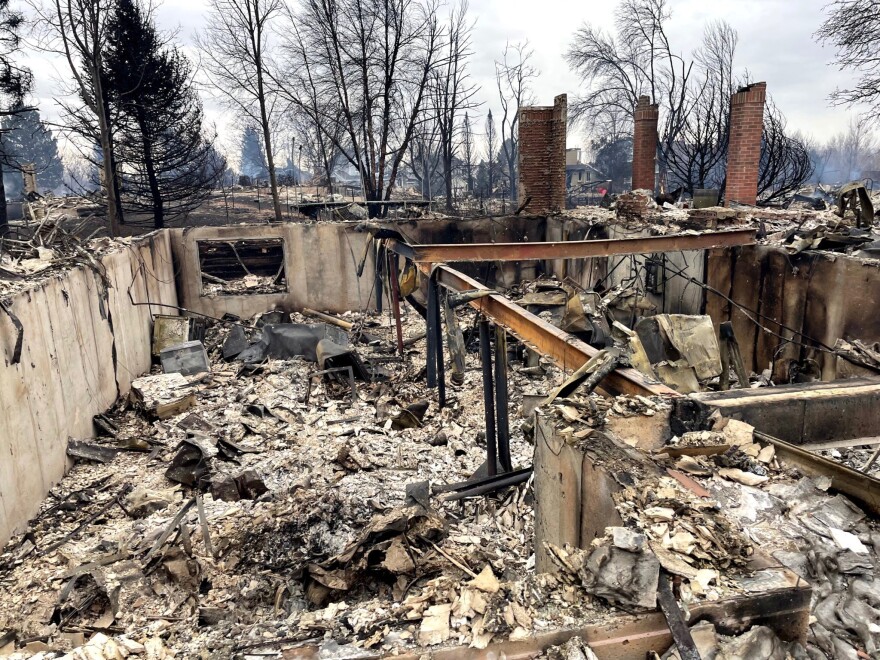Some effects of the Marshall Fire that ravaged Boulder County in 2021 are obvious - scorched homes, charred earth. But some of the wildfire's impacts have been less visible.
Wildfires produce an enormous amount of smoke, and the ash and particulates that result can infiltrate almost anything. If a neighbor’s house burned down in the Marshall Fire, the contents of that home could have ended up in nearby homes in the form of ash.
Mike Hannigan, a professor of mechanical engineering at the University of Colorado Boulder, studied the Marshall Fire's post-burn particulates.
“The ash has some toxic chemicals in it, in large part because it was not just wood burning—it was homes and cars and chemicals in garages,” Hannigan said.
�Ჹ�ԲԾ�������’s didn’t examine the effects this ash could have on health, though. He focused on detecting the presence and composition of the ash inside of the home.
Still, Hannigan said the ash does contain known carcinogens. With that in mind, he recommends cleaning thoroughly in the aftermath of a fire and installing an air purifier in the home for a few months.
“As long as you cleaned– carefully– cleaned up that dust carefully, those particles are not going to be in high concentrations in the homes,” Hannigan said.
But not everyone knows these materials are dangerous– and improper cleaning could put the particles right back in the air.
"Keeping the dust down, and then inside your home having an air cleaner with a filter to clean the particles out, it's probably all very smart to do," Hannigan said.
Hannigan is working on another study about gases released by the Marshall Fire , which can leech into the walls and furniture in a home and are even more difficult to clean up.
While Hannigan's study didn't measure the impact these particles or gases had on human health, his findings did indicate that the levels of carcinogens were relatively low. How those levels could affect health has yet to be determined.






